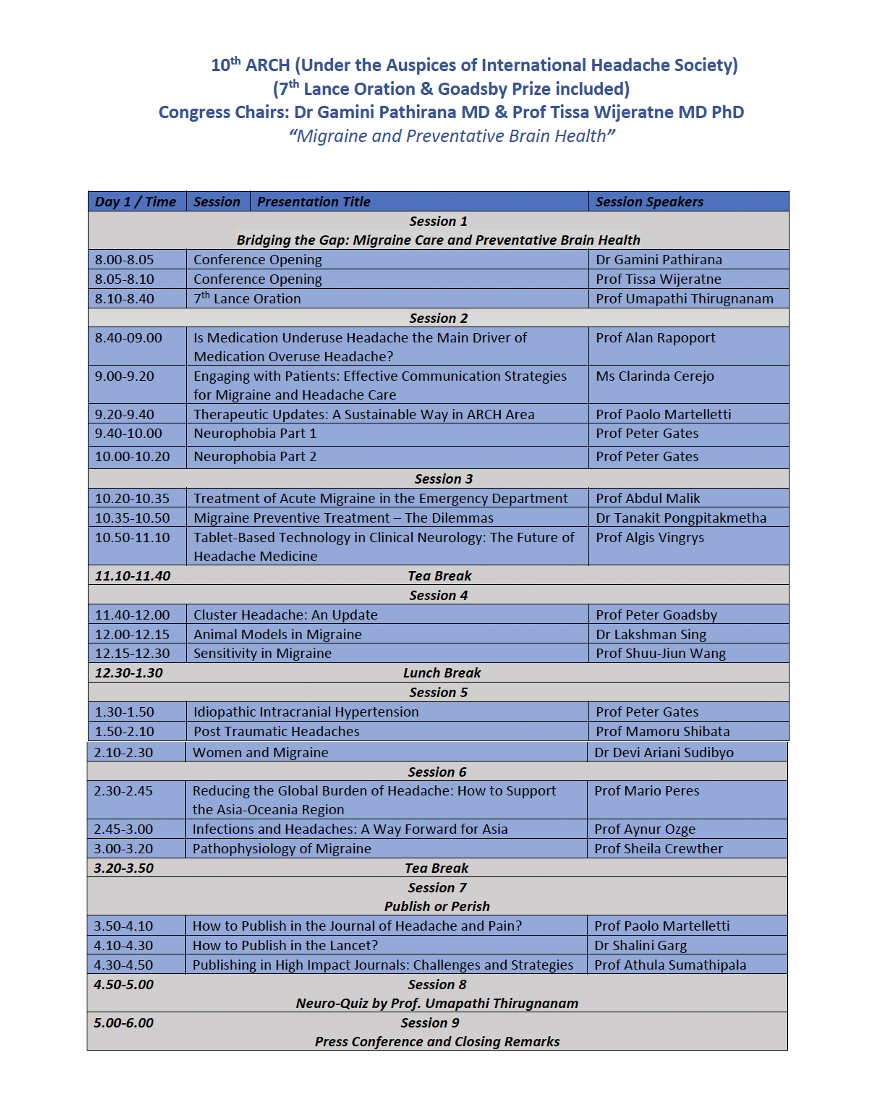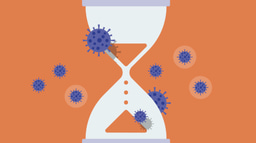Strengthening a Partnership
Published in Biomedical Research

The collaboration between the Asian Regional Consortium for Headache (ARCH) and The Journal of Headache and Pain is strengthened. The proceedings of the 10th ARCH Congress, 18-19 December 2024, Colombo, Sri Lanka, will be published as a Supplement to The Journal of Headache and Pain.
Following the publication of the Thematic Series Migraine and Brain Health: Towards Better Understanding from the Asia-Oceania Region this further step of collaboration will contribute to global migraine research while emphasizing the perspectives and needs of the Asia-Oceania community.

Follow the Topic
-
The Journal of Headache and Pain

The Journal of Headache and Pain is a peer-reviewed open access journal specifically dedicated to researchers involved in all aspects of headache and related pain syndromes, including epidemiology, public health, basic science, translational medicine, clinical trials and real-world data.
Related Collections
With Collections, you can get published faster and increase your visibility.
Pathophysiology of Pain in Neurodegenerative Diseases
Pain is a debilitating and often under-recognized symptom of neurodegenerative disorders (NDD), including but not limited to Alzheimer's disease (AD) and Parkinson's disease (PD). One of the interesting and clinically relevant issues is the bidirectional relationship between pain and NDD. In particular, NDD, like chronic pain, which involves not only peripheral but also central mechanisms, is often associated with neuroinflammation, central and peripheral sensitization, and neuronal degeneration. Such chronic pain may worsen the neurodegenerative process, while acute pain may be overlooked in AD and other conditions associated with cognitive decline. The underlying common and disease-specific molecular mechanisms, likely involving changes in neurotransmitters, ion channels, and glial activation, remain largely unknown. It is not entirely clear whether and how the neurodegenerative process may serve as a cause of pain, creating a vicious circle that significantly affects the quality of life of patients. Headaches, and migraine in particular, may have their own specific interactions with NDD. These unanswered questions require research that should deepen our understanding of the molecular and cellular mechanisms of such connections, exploring how these discoveries may inspire the development of targeted therapeutic strategies to improve patient outcomes.
The current Thematic Series “Pathophysiology of Pain in Neurodegenerative Diseases” invites original papers and review articles primarily devoted to understanding pathophysiological mechanisms linking various types of pain, including migraine, headache and other pain syndromes, with neurodegenerative disorders. This series aims to advance our understanding of these complex associations to promote future research for innovative therapeutic strategies.
This Collection supports and amplifies research related to SDG 3, Good Health and Well-Being.
All submissions in this collection undergo the journal’s standard peer review process. Similarly, all manuscripts authored by a Guest Editor(s) will be handled by the Editor-in-Chief. As an open access publication, this journal levies an article processing fee (details here). We recognize that many key stakeholders may not have access to such resources and are committed to supporting participation in this issue wherever resources are a barrier. For more information about what support may be available, please visit OA funding and support, or email OAfundingpolicy@springernature.com or the Editor-in-Chief.
Publishing Model: Open Access
Deadline: Mar 16, 2026
The Epigenome and Transcriptome in Headache Disorders
The thematic series titled "The Epigenome and Transcriptome in Headache Disorders" focuses on the latest advancements in the studies on the epigenome and transcriptome in headache research, aiming to elucidate the complex neurological mechanisms underlying headache disorders, particularly migraine and tension-type headaches. This collection explores how the regulation of gene expression with a special emphasis on its epigenetic and transcriptomics components with corresponding techniques are being applied to analyze clinical, neurophysiological, and molecular data, uncovering patterns and subtle relationships within the intricate landscape of headache-related phenomena.
The studies of the epigenome and transcriptome offer new perspectives for understanding the complex interplay between genetic predispositions, environmental triggers, and individualized symptomatology. This collection delves into how epigenetic modifications influence the onset, frequency, and individual variability of headaches, providing insights that support the development of personalized treatment strategies and advancing the field of precision medicine.
Additionally, the collection highlights the potential of the epigenome and transcriptome in enhancing early diagnosis, predicting headache occurrences, and optimizing treatment approaches. Through innovative molecular biology techniques, the collection aims to offer a deeper understanding of headache disorders and pave the way for more effective therapeutic interventions.
The collection also invites discussion on the ethical implications of diagnostic and therapeutic approaches based on epigenetic and transcriptome findings. Our goal is to improve the quality of headache diagnosis and treatment in an effective and ethically responsible manner.
This Collection supports and amplifies research related to SDG 3, Good Health and Well-Being.
All submissions in this collection undergo the journal’s standard peer review process. Similarly, all manuscripts authored by a Guest Editor(s) will be handled by the Editor-in-Chief. As an open access publication, this journal levies an article processing fee (details here). We recognize that many key stakeholders may not have access to such resources and are committed to supporting participation in this issue wherever resources are a barrier. For more information about what support may be available, please visit OA funding and support, or email OAfundingpolicy@springernature.com or the Editor-in-Chief.
Publishing Model: Open Access
Deadline: Feb 28, 2026





Please sign in or register for FREE
If you are a registered user on Research Communities by Springer Nature, please sign in